Large flightless birds, a fascinating and diverse group, have evolved unique adaptations to terrestrial life. From the towering ostriches of Africa to the enigmatic kiwis of New Zealand, these birds have captivated human interest for centuries.
In total, 21 remarkable species showcase the extraordinary range of forms and behaviors exhibited by large birds grounded by their inability to fly.
Each species, from the iconic ostrich with its incredible speed to the endearing penguins adept in the water, occupies specific niches across the globe.
Some, like the cassowaries and emus, display vibrant colors and distinctive features, while others, such as the kiwis and rheas, exemplify the subtleties of adaptation.
21 Large Flightless Birds
This exploration into the world of large flightless birds reveals not only the diverse ecosystems they inhabit, underscoring the importance of conservation efforts to ensure the survival of these remarkable avian species.
1. Cassowary
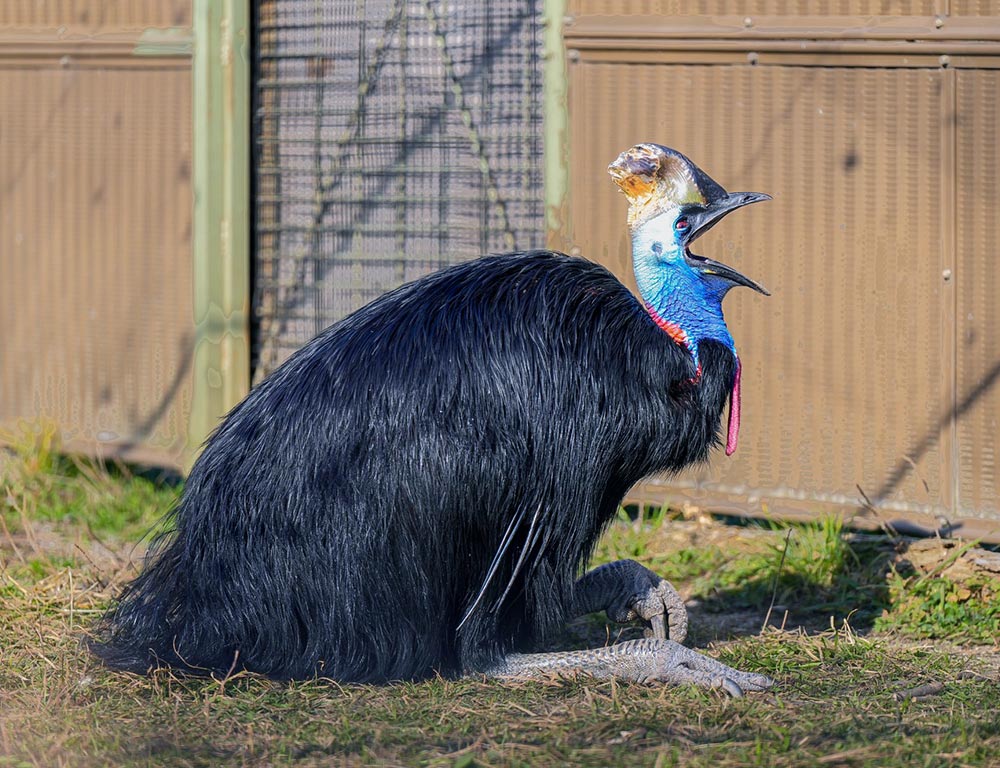
- Scientific Name: Casuarius
- Population: Varies, estimated to be around 1,500 to 2,000 individuals.
- Life Span: 40 to 50 years.
- Size: 4 to 6.6 feet tall.
- Weight: 75 to 130 kg.
- Wingspan: N/A, as cassowaries have small, non-functional wings.
- Status: Some species are listed as vulnerable.
The cassowary is an imposing flightless bird found in the tropical forests of New Guinea, northern Australia, and nearby islands.
Known for their striking blue and black coloration and a helmet-like casque on their heads, cassowaries are solitary and territorial. They are primarily frugivorous but also consume small vertebrates and invertebrates.
Cassowaries are capable runners, reaching speeds of up to 30 mph, and are equipped with powerful legs and sharp claws that make them formidable when provoked.
2. Ostrich
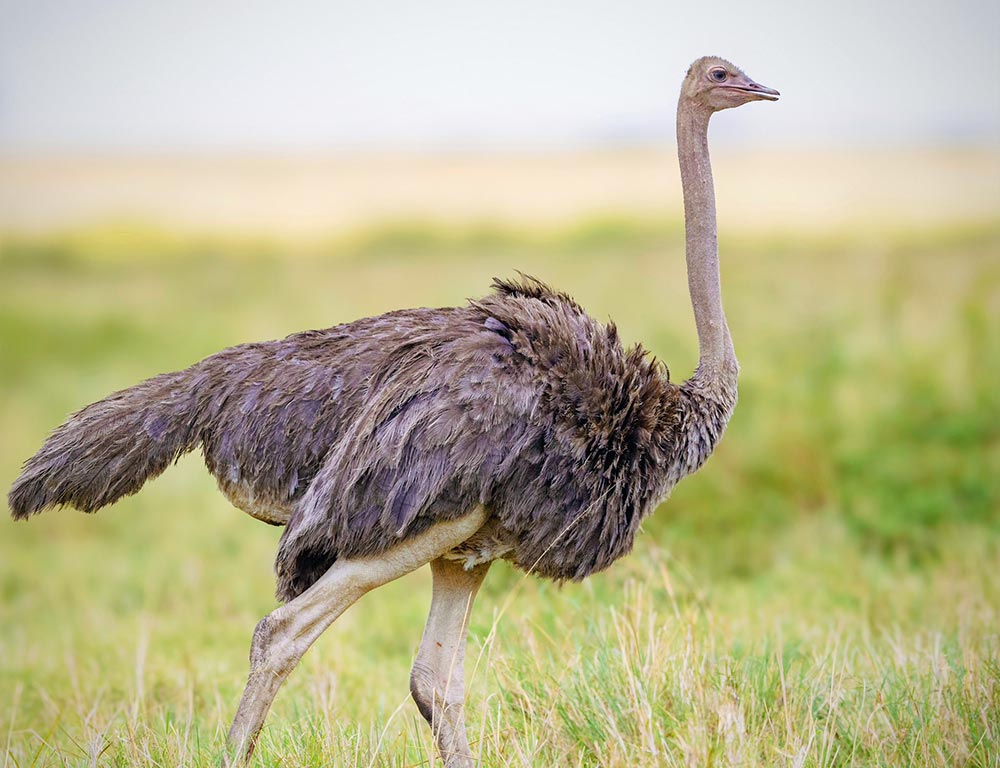
- Scientific Name: Struthio camelus
- Population: Around 600,000 individuals.
- Life Span: 30 to 40 years.
- Size: 8.2 to 9.8 feet tall.
- Weight: 220 to 290 kg.
- Wingspan: 6.6 to 9.8 feet.
- Status: Least Concern.
The ostrich, native to Africa, is the world’s largest and heaviest bird. Renowned for its incredible speed (up to 72 mph), the ostrich has long legs and a distinctive neck.
Their diet includes plants, but they are also omnivores, consuming insects and small animals.
Living in groups, ostriches are adaptable to various habitats, from savannas to deserts. They use their powerful legs for defense and can cover large distances in search of food and water.
3. Emu
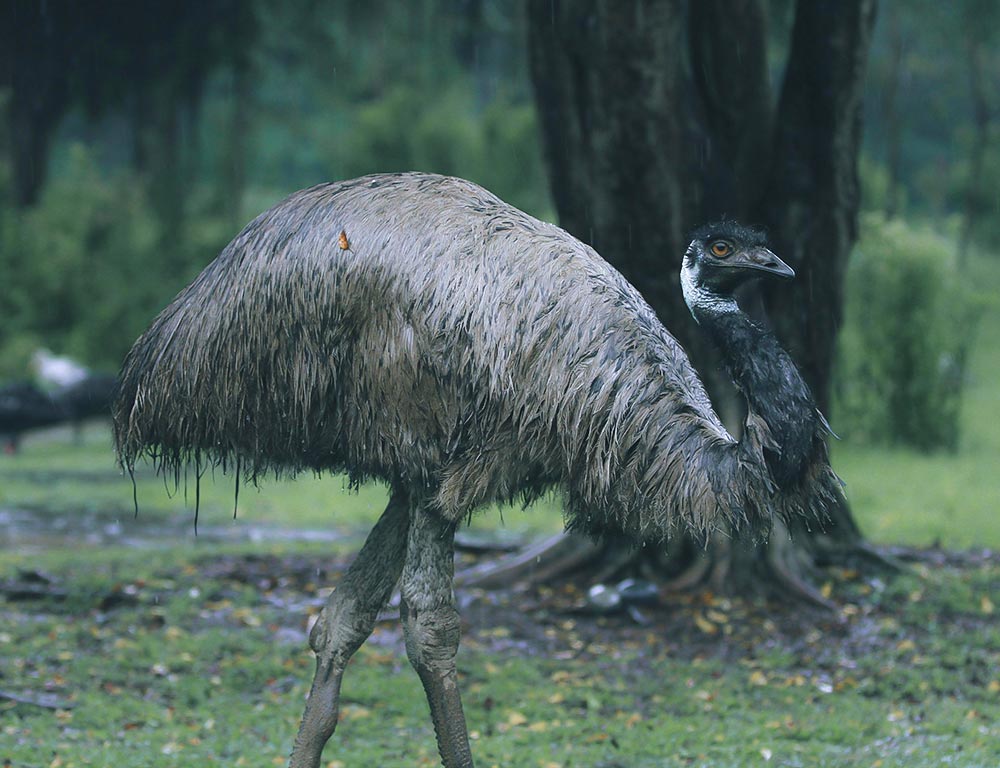
- Scientific Name: Dromaius novaehollandiae
- Population: Estimated around 700,000 to 1 million individuals.
- Life Span: 10 to 20 years.
- Size: 5.7 to 6.6 feet tall.
- Weight: 36 to 60 kg.
- Wingspan: N/A, as emus have small, non-functional wings.
- Status: Least Concern.
Native to Australia, the emu is the world’s second-largest bird. With a unique appearance featuring long legs and neck, emus are herbivores, feeding on a variety of plants and insects.
They are known for their distinctive booming calls during the breeding season.
Emus are social birds that form mating pairs during the breeding season and raise their chicks together. Despite their flightlessness, emus are excellent runners and can reach speeds of up to 30 mph.
4. Penguin
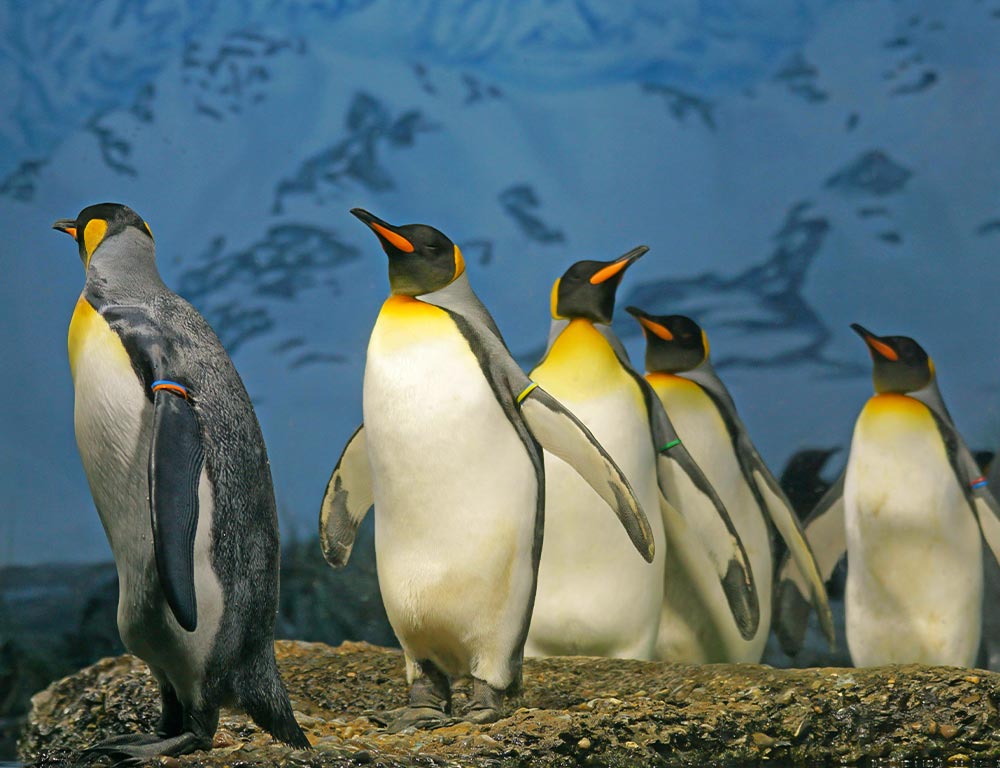
- Scientific Name: Various species, e.g., Aptenodytes, Spheniscus.
- Population: Varies by species.
- Life Span: 15 to 20 years (varies by species).
- Size: Ranges from 16 inches to over 4 feet, depending on the species.
- Weight: Varies significantly among species.
- Wingspan: Varies by species.
- Status: Some species are listed as vulnerable or near-threatened.
Penguins are unique large flightless birds found in the Southern Hemisphere, particularly in Antarctica.
They have adapted to life in the water, using their wings as flippers for swimming. Penguins are carnivorous, feeding on fish and squid. They often form large colonies for breeding and raising their chicks.
Despite their inability to fly, penguins are agile in the water, using their streamlined bodies to navigate and catch prey. Penguins are also well-adapted to extreme cold, with specialized feathers and a layer of blubber for insulation.
5. Rhea
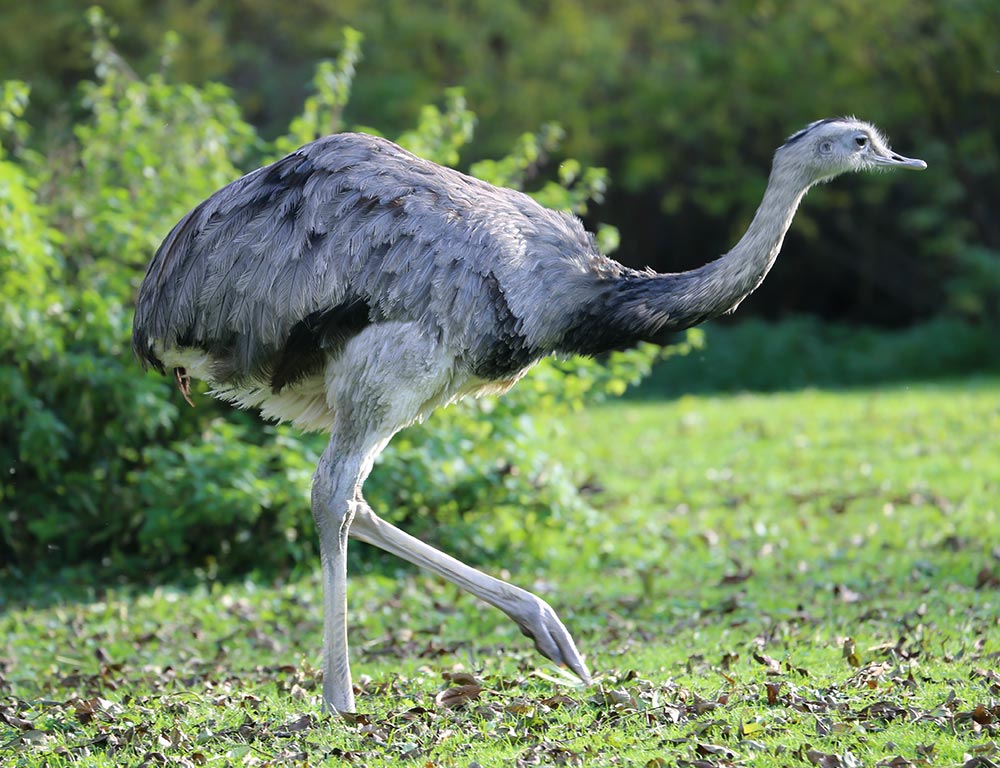
- Scientific Name: Rhea (two species: Rhea pennata and Rhea americana).
- Population: Population estimates vary, but some species are classified as near-threatened.
- Life Span: 10 to 15 years.
- Size: Varies by species, ranging from 3 to 5 feet tall.
- Weight: 20 to 40 kg.
- Wingspan: N/A, as rheas have small, non-functional wings.
- Status: Some species are classified as near-threatened or least concern.
Rheas, native to South America, are large, flightless birds with long legs and necks. They are primarily herbivores, grazing on grasses and plants, but they may also eat small invertebrates.
Rheas are known for their swift running abilities and can reach speeds up to 37 mph. They often form flocks, and males are involved in incubating and caring for the eggs.
6. Southern Cassowary
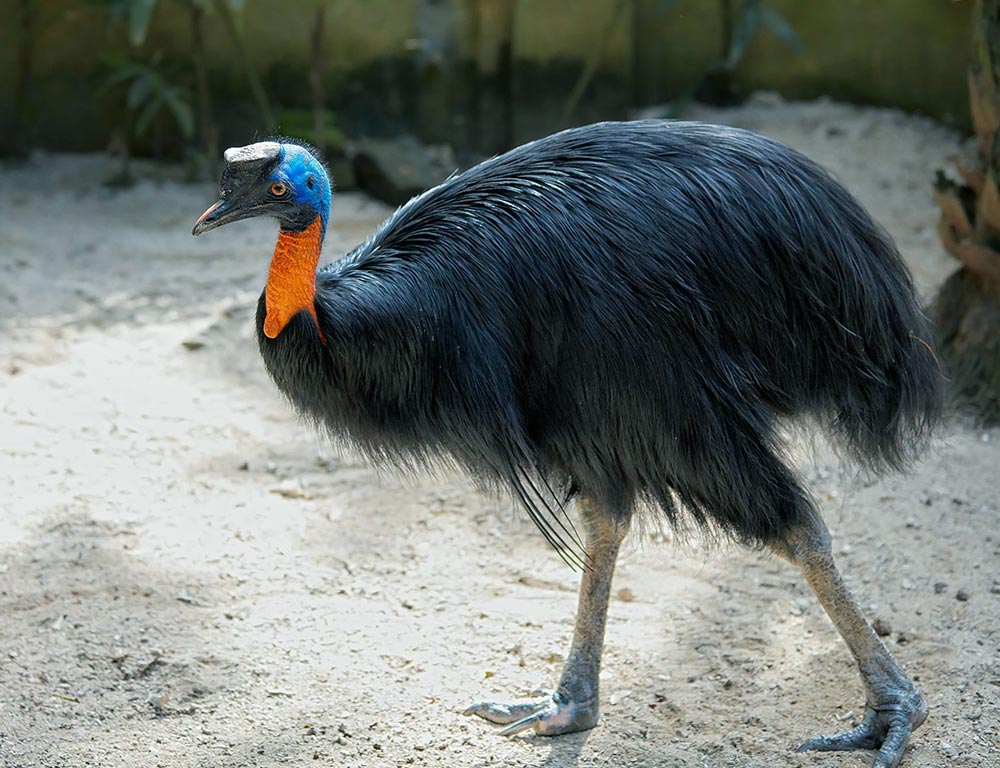
- Scientific Name: Casuarius casuarius.
- Population: Estimated around 1,500 to 2,000 individuals.
- Life Span: 40 to 50 years.
- Size: 4 to 6.6 feet tall.
- Weight: 75 to 130 kg.
- Wingspan: N/A, as cassowaries have small, non-functional wings.
- Status: Some populations are listed as vulnerable.
The southern cassowary, found in northern Australia, New Guinea, and nearby islands, is a striking bird with vibrant blue and black coloring. These solitary birds are important for their role in seed dispersal in their habitats.
Despite their seemingly docile appearance, cassowaries can be aggressive and are equipped with powerful legs and sharp claws for defense.
7. Kakapo
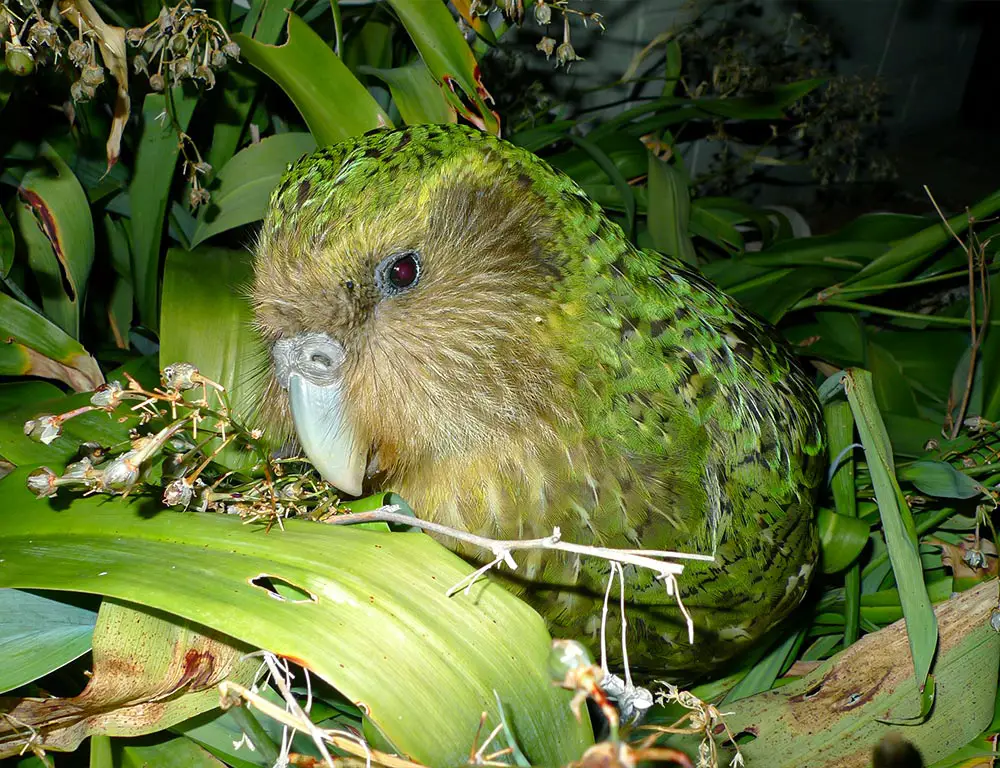
- Scientific Name: Strigops habroptilus.
- Population: Critically endangered, with only around 200 individuals.
- Life Span: 60+ years.
- Size: 23 to 25 inches.
- Weight: 2 to 4 kg.
- Wingspan: N/A, as kakapos are flightless.
- Status: Critically Endangered.
The kakapo, or night parrot, is a nocturnal, flightless parrot native to New Zealand. With a unique appearance and behavior, kakapos are critically endangered due to habitat loss and introduced predators.
They are herbivores, feeding on native plants, seeds, and fruits. Conservation efforts are underway to protect and increase the population of this rare and charismatic bird.
8. Kiwi
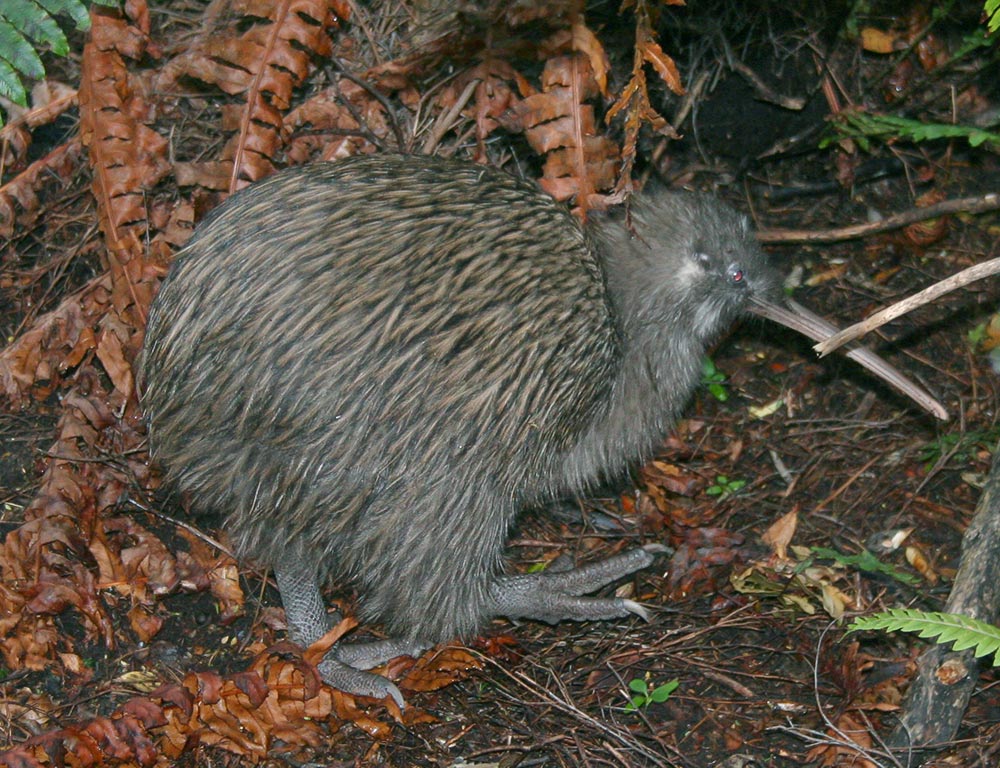
- Scientific Name: Apteryx species (e.g., Apteryx australis, Apteryx mantelli).
- Population: Varies by species, some are endangered.
- Life Span: 25 to 50 years.
- Size: 14 to 18 inches.
- Weight: 1.3 to 3.3 kg.
- Wingspan: N/A, as kiwis have small, vestigial wings.
- Status: Some species are classified as vulnerable or endangered.
Kiwi birds, native to New Zealand, are characterized by their small size, long beaks, and distinctive appearance.
Nocturnal and shy, kiwis are omnivores, feeding on insects, worms, and fruits. They lay the largest eggs relative to their body size among birds.
Kiwis are flightless, with small, non-functional wings, but they are excellent runners and have a keen sense of smell, which they use to find food. Conservation efforts focus on protecting their habitats and managing threats to their survival.
9. Lesser Rhea
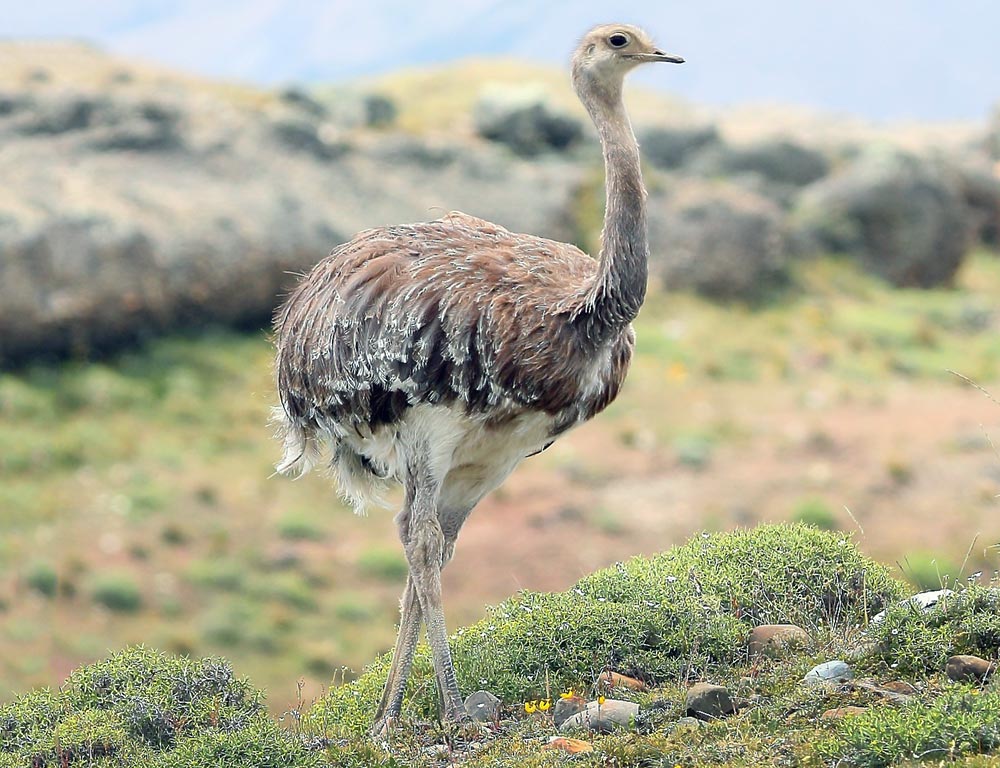
- Scientific Name: Rhea pennata.
- Population: Varies, but some populations are declining.
- Life Span: 10 to 15 years.
- Size: Approximately 3 feet tall.
- Weight: 20 to 25 kg.
- Wingspan: N/A, as rheas have small, non-functional wings.
- Status: Varies, but some populations may be near-threatened.
The lesser rhea, native to South America, is a smaller species of rhea with a distinctive appearance. They inhabit grasslands and open areas, where they primarily feed on grasses and small invertebrates.
Lesser rheas often form groups and display communal nesting behaviors. Despite their ability to run at high speeds, they face threats from habitat loss and hunting in certain regions.
10. Flightless Birds
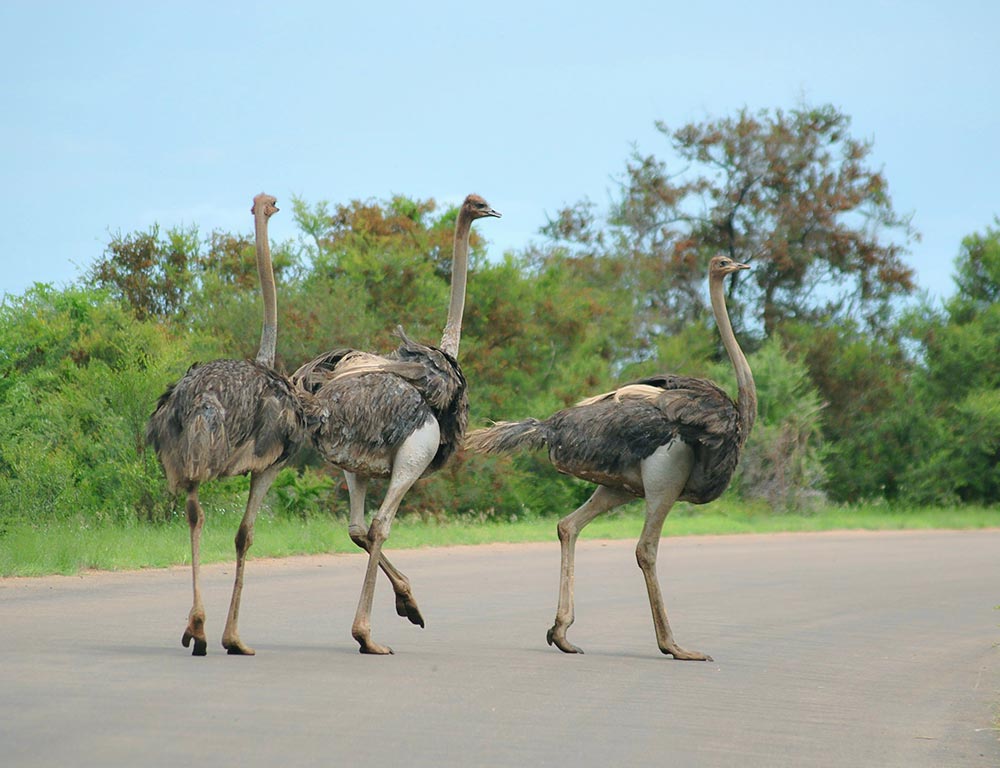
- Scientific Name: Various species.
- Population: Varied, with some species facing threats.
- Life Span: Varied across species.
- Size: Varied across species.
- Weight: Varied across species.
- Wingspan: N/A for flightless birds.
- Status: Some species may be endangered or vulnerable.
Flightless birds comprise various species like kiwis, cassowaries, ostriches, and penguins. They have adapted to a terrestrial lifestyle, often with well-developed legs for running or swimming.
The loss of flight is compensated with specialized characteristics suited to their environments.
Flightless birds play unique ecological roles, such as seed dispersal or maintaining balance in local ecosystems. Conservation efforts focus on protecting their habitats and addressing threats specific to each species.
11. Macaroni Penguin
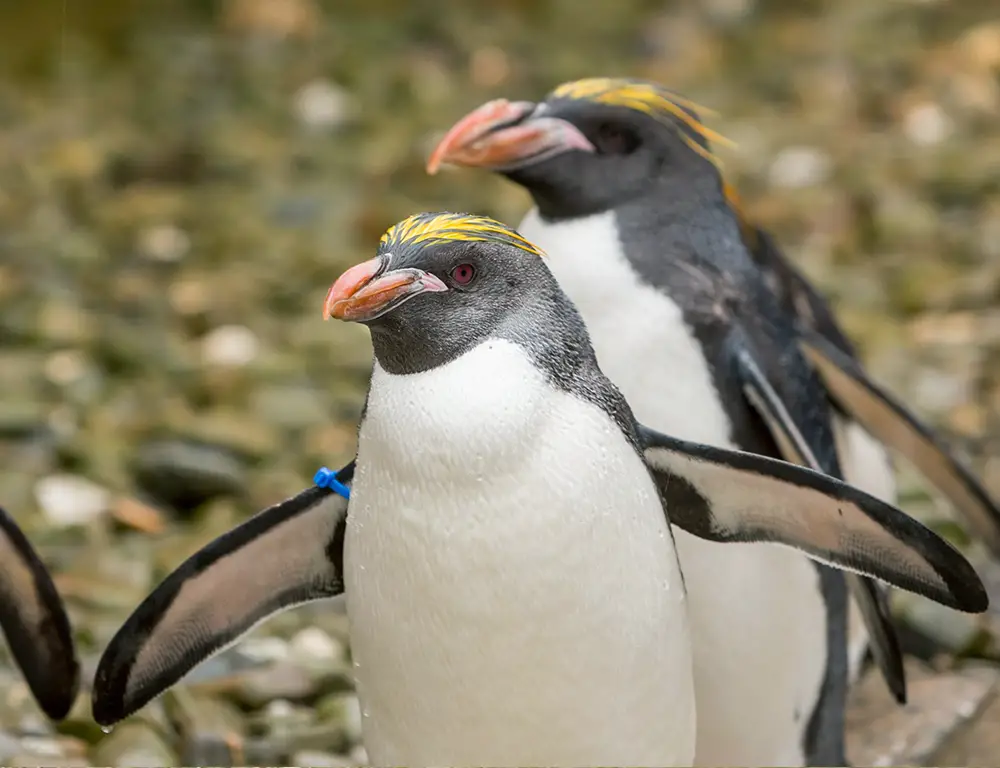
- Scientific Name: Eudyptes chrysolophus.
- Population: Estimated in the millions.
- Life Span: 10 to 15 years.
- Size: 20 to 28 inches tall.
- Weight: 3 to 6.5 kg.
- Wingspan: Approximately 28 inches.
- Status: Least Concern.
- The macaroni penguin is a species of crested penguin found in the subantarctic and Antarctic regions.
Recognized by their distinctive yellow crests and red-orange beaks, macaroni penguins are skilled swimmers, covering vast distances in search of food.
They primarily feed on krill and small fish. These penguins breed in large colonies and are known for their energetic displays. While currently listed as Least Concern, they face potential threats from climate change affecting their prey availability.
12. Somali Ostrich
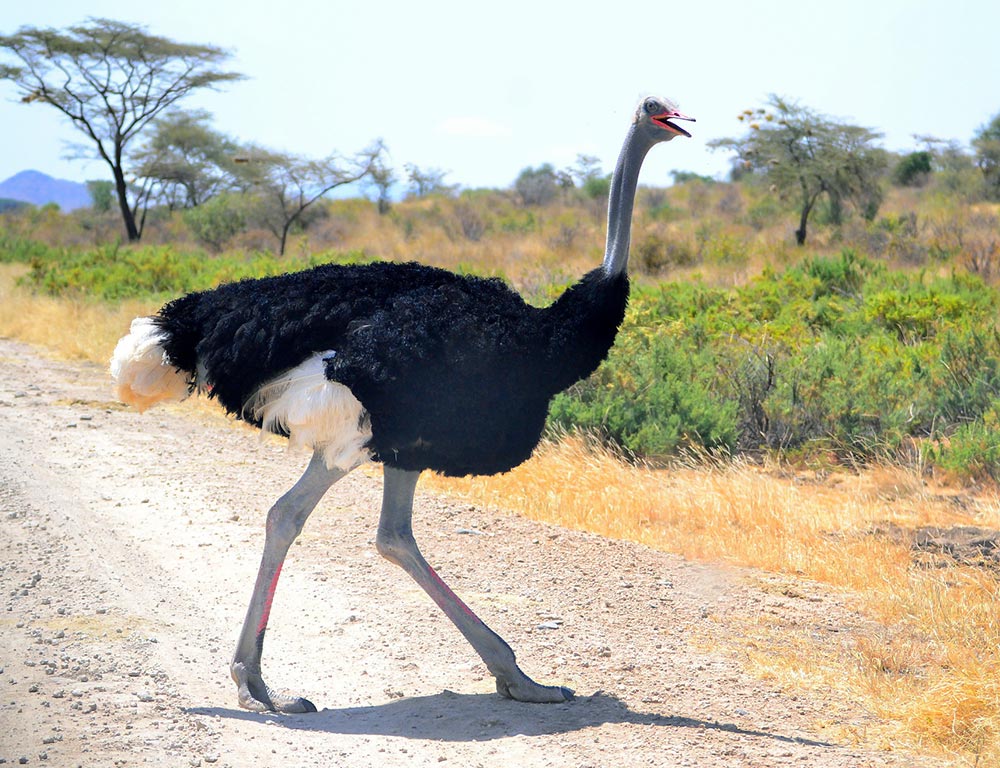
- Scientific Name: Struthio molybdophanes.
- Population: Estimated in the thousands.
- Life Span: 30 to 40 years.
- Size: 8.2 to 9.8 feet tall.
- Weight: 100 to 130 kg.
- Wingspan: 6.6 to 9.8 feet.
- Status: Data Deficient, but populations may be declining.
The Somali ostrich, native to the Horn of Africa, is a subspecies of the common ostrich.
Distinguished by its blue neck and thighs, it is adapted to a range of arid and semi-arid habitats. They are omnivores, consuming plants, insects, and small animals.
Somali ostriches are social birds, often forming flocks, and their populations are potentially threatened by habitat degradation and hunting. However, due to insufficient data, their conservation status remains uncertain.
13. Steamer Duck
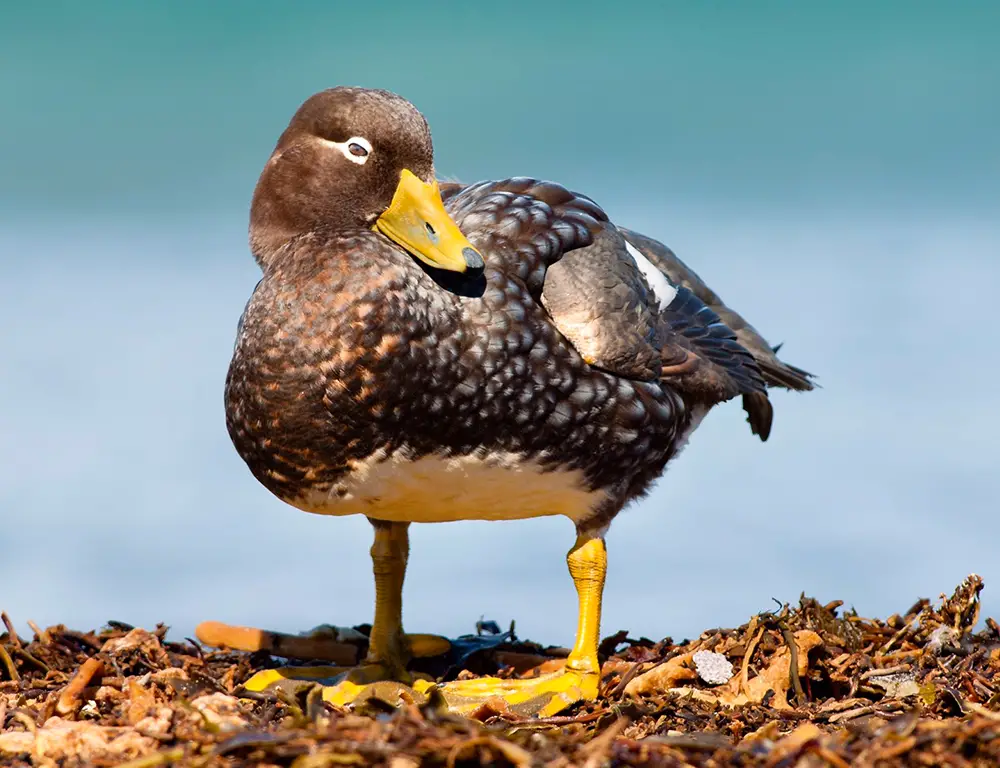
- Scientific Name: Tachyeres species
- Population: Some populations may face threats.
- Life Span: Around 10 to 15 years.
- Size: Medium to large.
- Weight: over 3 kg.
- Status: Some populations may be near-threatened.
Steamer ducks, native to South America, are known for their unique behavior of using their wings to “steam” across the water’s surface. They inhabit freshwater lakes and coastal areas, feeding on aquatic vegetation, mollusks, and small fish.
Steamer ducks are well-adapted to their aquatic lifestyle, with waterproof feathers and strong, webbed feet. Threats to their populations include habitat degradation and hunting in some regions.
14. Takahē
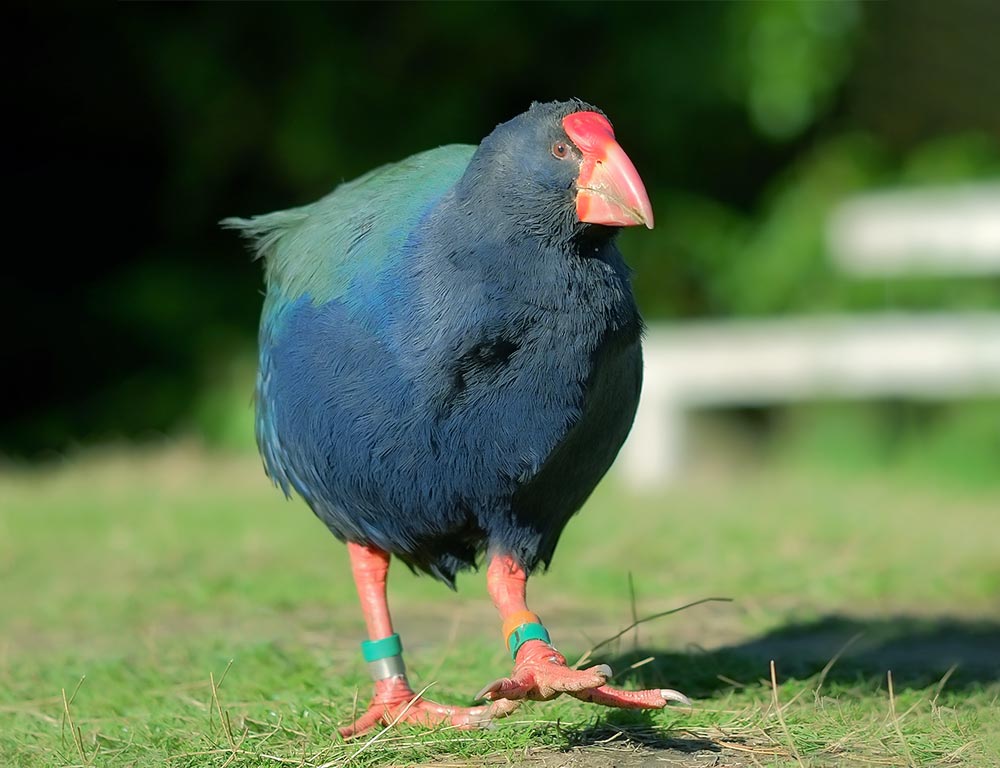
- Scientific Name: Porphyrio hochstetteri.
- Population: Critically endangered, with around 450 individuals.
- Life Span: 10 to 20 years.
- Size: Approximately 2 feet tall.
- Weight: 2 to 4 kg.
- Wingspan: N/A, as takahē are flightless.
- Status: Critically Endangered.
The takahē, endemic to New Zealand, is a large, flightless bird with distinctive blue and green plumage. Once thought to be extinct, conservation efforts have helped increase their numbers, but they remain critically endangered.
Takahē primarily graze on grasses and are adapted to life in alpine and subalpine environments. Habitat protection and predator control are crucial for the survival of this rare bird.
15. Flightless Cormorant
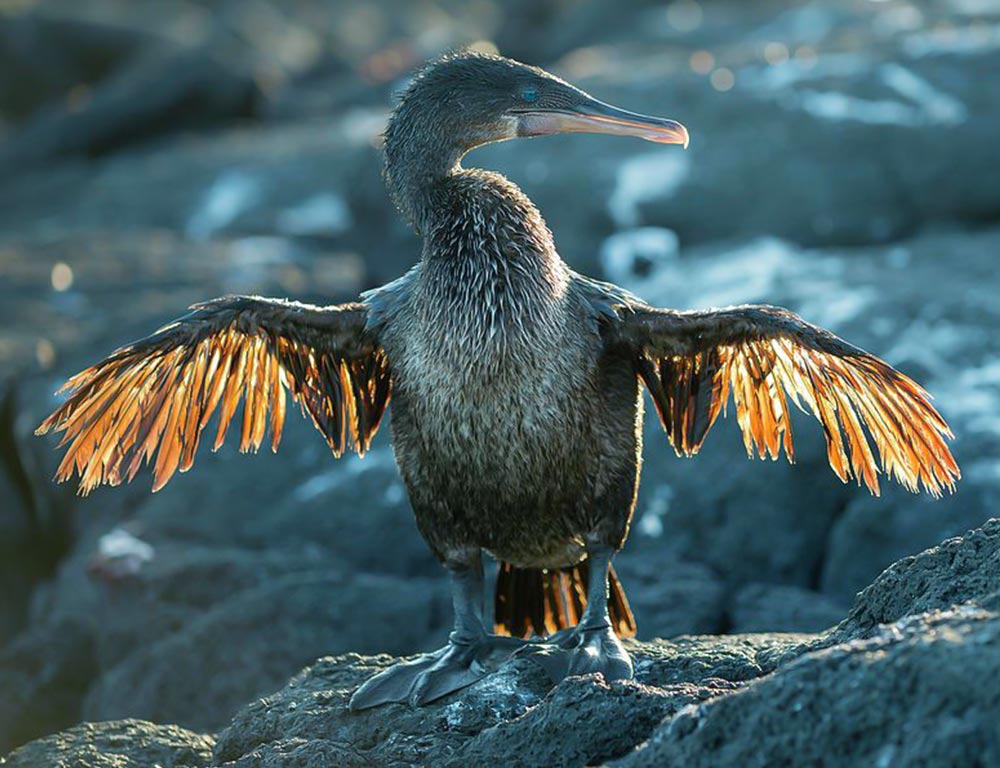
- Scientific Name: Phalacrocorax harrisi.
- Population: Estimated in the thousands.
- Life Span: Not well-documented, but likely around 15 to 20 years.
- Size: Approximately 3 feet tall.
- Weight: 2.5 to 5 kg.
- Wingspan: N/A, as flightless cormorants have reduced wings.
- Status: Vulnerable.
Endemic to the Galápagos Islands, the flightless cormorant has evolved to be flightless due to the absence of land predators.
They are excellent swimmers and divers, preying on fish and other marine organisms. Their wings have evolved into small, non-functional structures.
The flightless cormorant’s vulnerability stems from its restricted distribution and susceptibility to disturbances in its habitat.
16. Galapagos Cormorant
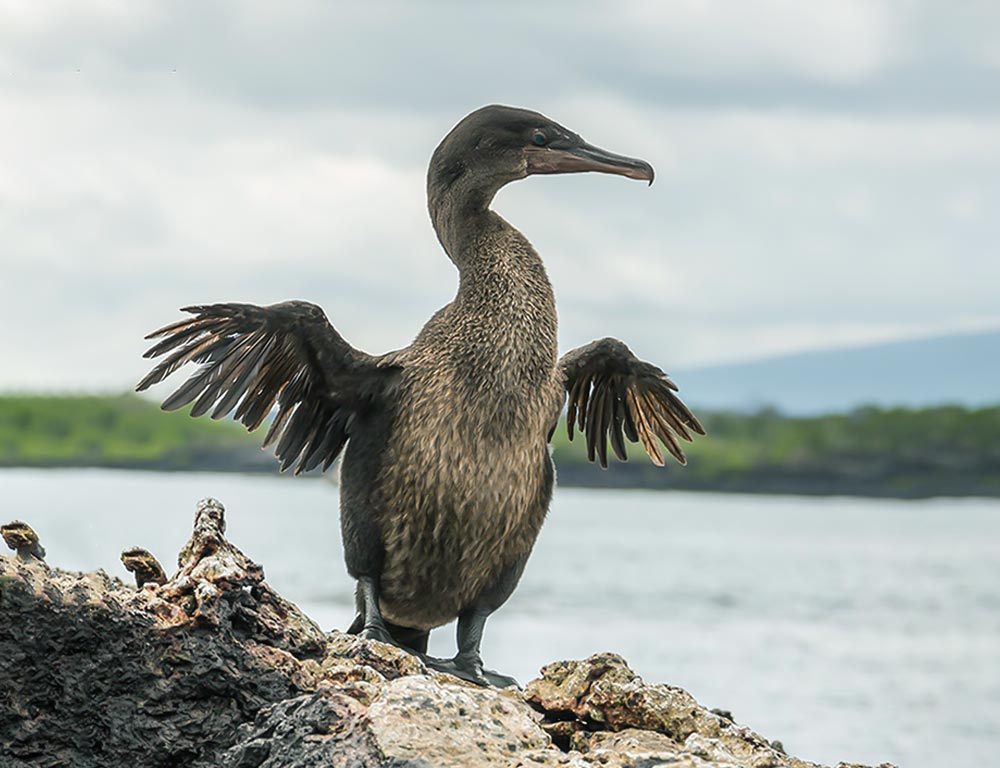
- Scientific Name: Phalacrocorax galapagoensis.
- Population: Estimated in the thousands.
- Life Span: Not well-documented, but likely around 15 to 20 years.
- Size: Approximately 3 feet tall.
- Weight: 2.5 to 5 kg.
- Wingspan: N/A, as Galapagos cormorants have reduced wings.
- Status: Vulnerable.
Similar to the flightless cormorant, the Galapagos cormorant is native to the Galápagos Islands. These birds have adapted to their environment, with reduced wings and excellent diving abilities.
Their diet consists mainly of small fish. While their current status is vulnerable, the Galapagos cormorant faces threats from introduced predators, human disturbances, and potential changes in food availability due to climate change.
Conservation measures are in place to protect these unique birds and their habitats.
17. Great Spotted Kiwi
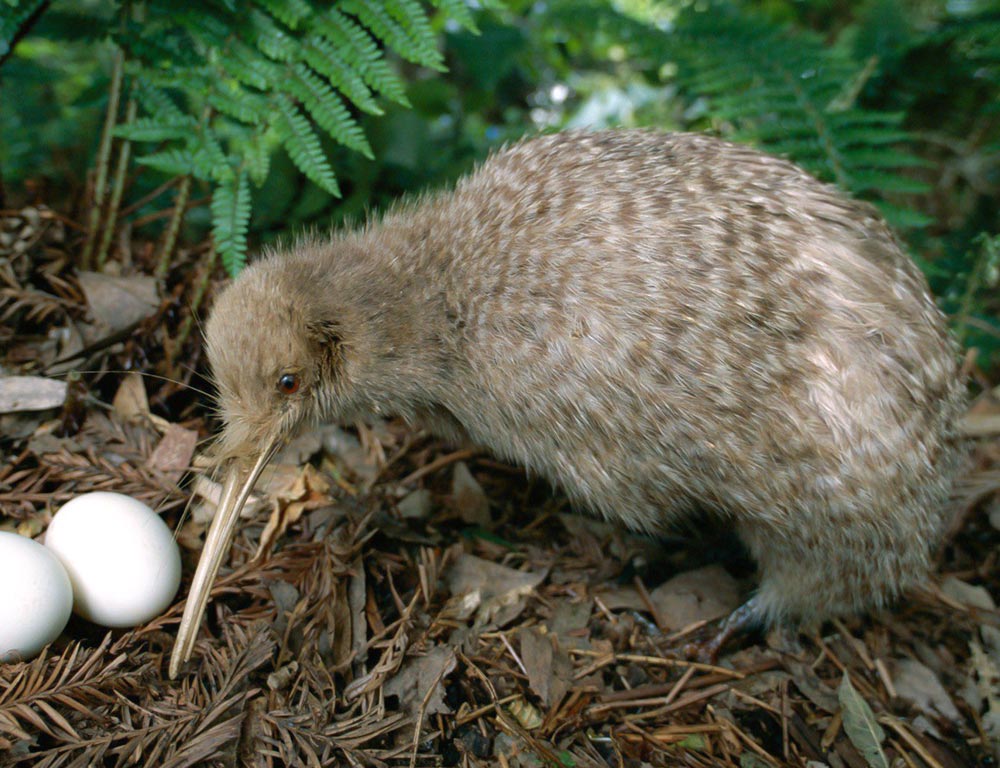
- Scientific Name: Apteryx haastii.
- Population: Estimated around 20,000 individuals.
- Life Span: 30 to 40 years.
- Size: 16 to 20 inches tall.
- Weight: 1.5 to 3 kg.
- Wingspan: N/A, as kiwis have small, vestigial wings.
- Status: Near Threatened.
The great spotted kiwi, native to New Zealand, is one of the five kiwi species. Nocturnal and shy, it is primarily herbivorous, feeding on insects, worms, and fruits.
With a distinctive appearance, including a long bill and brownish plumage, the great spotted kiwi is threatened by habitat loss, predators, and introduced mammalian species.
18. Guam Rail
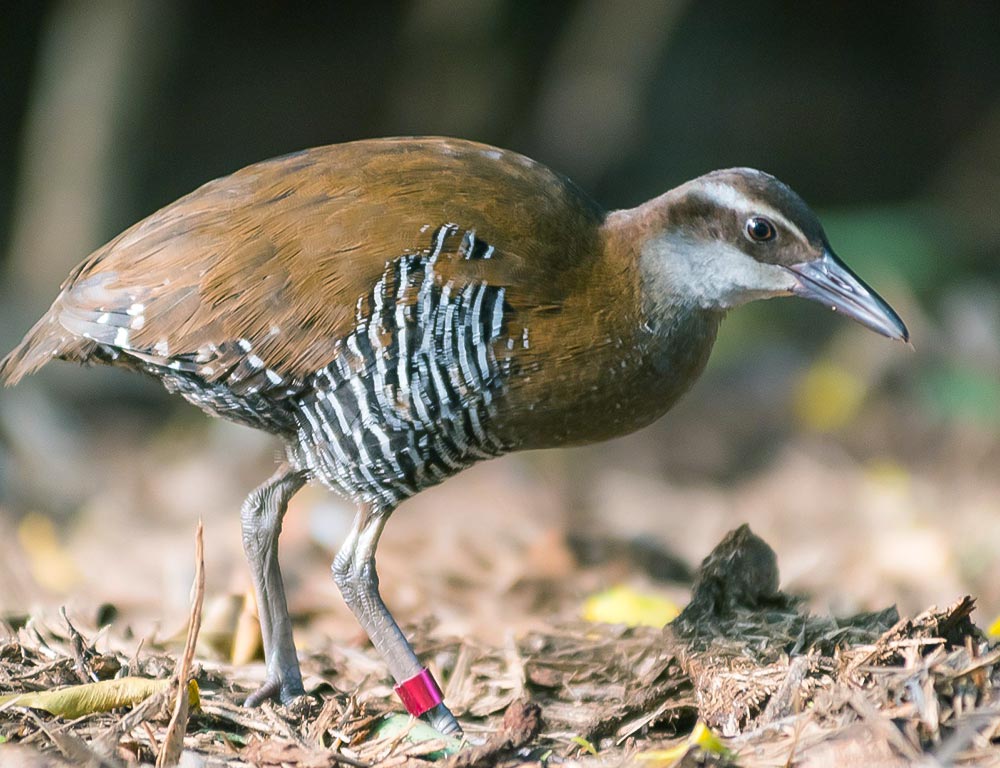
- Scientific Name: Gallirallus owstoni.
- Population: Critically endangered, with around 150 individuals.
- Life Span: Not well-documented, but likely around 5 to 10 years.
- Size: 11 inches tall.
- Weight: Approximately 150 g.
- Wingspan: N/A, as Guam rails are flightless.
- Status: Critically Endangered.
The Guam rail, endemic to Guam, became critically endangered due to habitat loss and predation by the brown tree snake, an invasive species.
Conservation efforts involve breeding programs and habitat restoration to prevent their extinction. Guam rails are small, flightless birds with distinctive markings and are crucial for the island’s ecosystem.
19. Humboldt Penguin
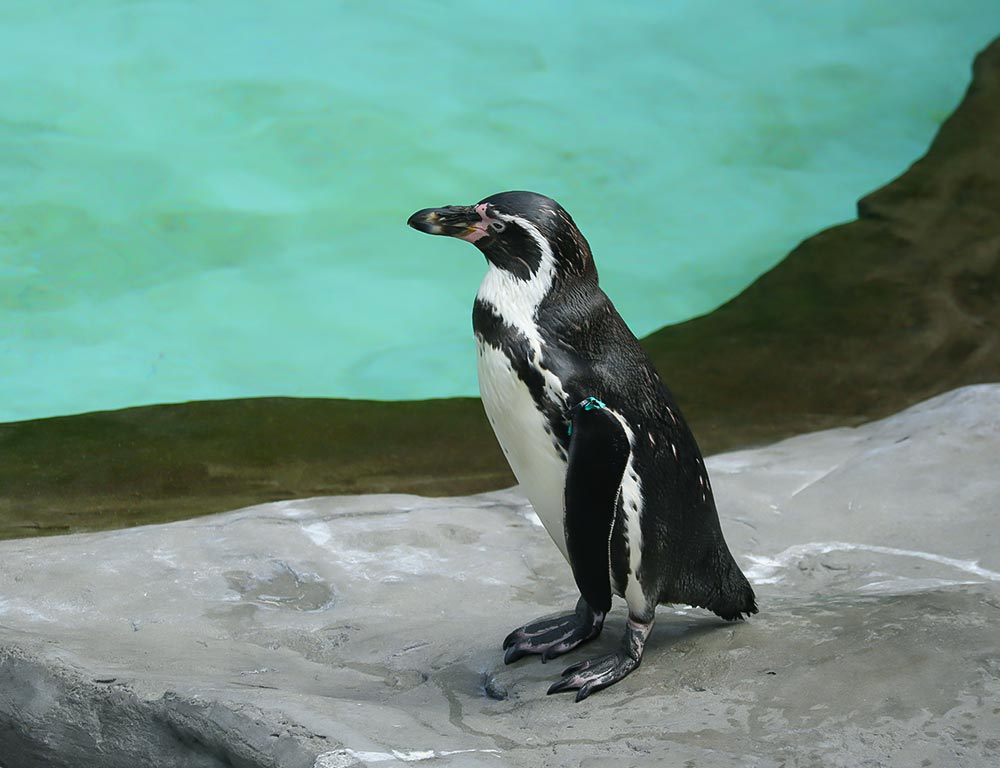
- Scientific Name: Spheniscus humboldti.
- Population: Estimated around 32,000 breeding pairs.
- Life Span: 15 to 20 years.
- Size: Approximately 26 inches tall.
- Weight: 3 to 5 kg.
- Wingspan: N/A, as Humboldt penguins have reduced wings.
- Status: Vulnerable.
The Humboldt penguin, found along the coasts of Chile and Peru, is adapted to a marine lifestyle. They feed on fish and other marine organisms, and their population is threatened by overfishing, climate change, and habitat disturbance.
Conservation efforts aim to protect their breeding colonies and address human-induced threats.
20. Titicaca Grebe

- Scientific Name: Rollandia microptera.
- Population: Data deficient, but populations are thought to be decreasing.
- Life Span: Not well-documented.
- Size: Approximately 16 inches tall.
- Weight: Around 700 g.
- Wingspan: N/A, as Titicaca grebes have reduced wings.
- Status: Near Threatened.
The Titicaca grebe, native to Lake Titicaca in South America, is known for its restricted distribution and unique appearance. It has adapted to its aquatic habitat, and threats include pollution, habitat degradation, and hunting.
Conservation efforts focus on understanding their population dynamics and implementing measures to protect their fragile habitat.
21. Weka
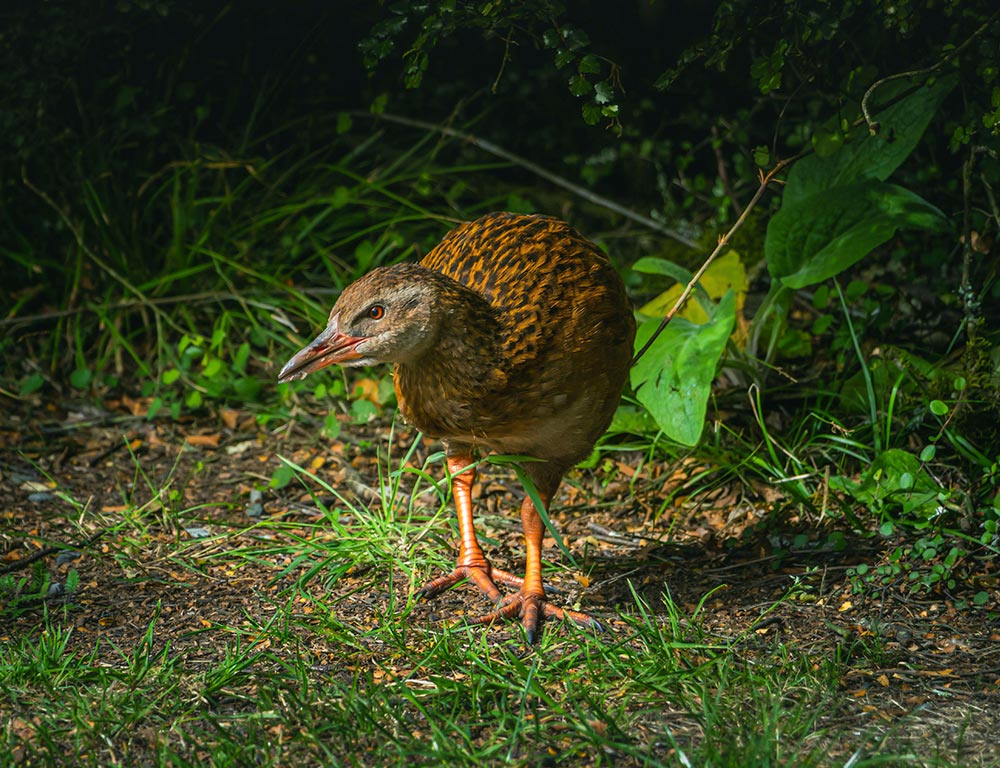
- Scientific Name: Gallirallus australis.
- Population: Varies, but some populations are stable.
- Life Span: Not well-documented, but likely around 6 to 10 years.
- Size: 20 to 23 inches tall.
- Weight: 1 to 3 kg.
- Wingspan: N/A, as wekas are flightless.
- Status: Least Concern.
The weka, native to New Zealand, is a flightless bird known for its bold and curious behavior. Omnivorous in nature, wekas feed on a variety of food, including insects, fruits, and small vertebrates.
While some populations face threats from introduced predators, particularly in mainland New Zealand, others on offshore islands remain stable.
The weka plays a significant role in the ecosystems it inhabits, contributing to seed dispersal and insect control.
Wrapping Up
The world of large flightless birds offers a tapestry of ecological marvels, each species weaving its unique narrative.
From the swift ostriches of Africa to the charming kiwis of New Zealand, these birds have evolved diverse strategies for survival, reflecting the intricacies of their respective habitats.
The challenges they face, including habitat loss and human-induced threats, highlight the urgency of conservation efforts.
As stewards of biodiversity, it is our responsibility to appreciate and protect these remarkable creatures. By delving into the lives of these giants, we gain insights into the delicate balance of nature and the interdependence of species.